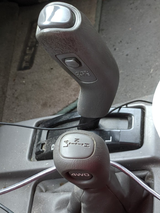I am a Pussy, Please Help
Hello frands I was hoping that someone could give me some advice.
This is a non-ironic thread.
I recently bought a 1st gen Tacoma, I lucked out and got a good deal on it. It is both my first Truck (4WD) and first automatic transmission.
My question is, what is the proper way to use the 4WD? I feel like a pussy but I don't know the different scenarios that they should be used for. There is also 1 and 2 on my transmission and I have no idea what the applications are for those either. Are they used in conjunction with the 4WD or completely separate?
What are the different applications and scenarios for both?
What is the difference between 4WD High and 4WD Low?
What is the locking differential and what should it be used for?
How should I even engage the 4WD?
Thank you to any truck buds that can help me out, it is appreciated!
This is a non-ironic thread.
I recently bought a 1st gen Tacoma, I lucked out and got a good deal on it. It is both my first Truck (4WD) and first automatic transmission.
My question is, what is the proper way to use the 4WD? I feel like a pussy but I don't know the different scenarios that they should be used for. There is also 1 and 2 on my transmission and I have no idea what the applications are for those either. Are they used in conjunction with the 4WD or completely separate?
What are the different applications and scenarios for both?
What is the difference between 4WD High and 4WD Low?
What is the locking differential and what should it be used for?
How should I even engage the 4WD?
Thank you to any truck buds that can help me out, it is appreciated!

